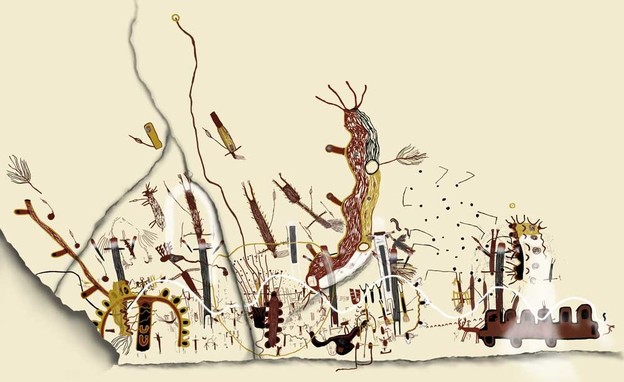Toward a poetry and poetics of the Americas (26)
The White Shaman mural: narrative and vision

Lower Pecos River, Texas
COMMENTARY
Time is written into the White Shaman mural … these murals are texts, analogous to the books once housed in the Library of Alexandria. — Carolyn Boyd, quoted by Eric A. Powell, in Archaeology (November/December 2017)
Nowhere is the achievement of early American imagination clearer than in the series of more than 200 painted rock shelters at the juncture of the Rio Grande and Pecos rivers in Texas. The dates in this instance for the hunter-gatherers who painted them go back some 2500–5000 years and mark the northernmost point of a vast cultural and linguistic area stretching south through Mexico and Mesoamerica. Yet the images, while different from those further south, are complex and unique, as they come to us, and they represent as well a kind of visual texting, even poetry, now waiting to be read again. Writes Carolyn Boyd, a contemporary artist and scholar who was the first to approach them as more than scattered and disconnected/random images: “Perhaps the oldest known texts in the New World … incredibly complex and compositionally intricate, these ancient murals, like codices, are pictographic writing. Far from being the idle doodling of ancient peoples, the rock art of the Lower Pecos was part of a living landscape that provided food, shelter, and a connection with the spirit world.” And further, towards a reimagining of its ritual context: “[The White Shaman mural] shows the process of a peyote ceremony, including the transformation of the mortal to the immortal, the cleansing and binding together (the uniting) of the pilgrims, the slaying of the peyote/deer, and the offering of fire to the ascending sun. This analysis introduced other possible functions for Pecos River style anthropomorphs beyond the stereotype of their being merely representations of shamans. Shamanism was certainly an integral component of hunter-gatherer religion; however, it was expressed in the rock art alongside and interwoven with a constellation of myths, histories, and ritual practices involving a myriad of spirit beings and mythological characters.”
=====================================================================
The preceding is a preview from the transnational anthology of North and South American poetry “from origins to present,” edited by Jerome Rothenberg and Javier Taboada and scheduled for publication by University of California Press.
See also Carolyn E. Boyd, The White Shaman Mural: An Enduring Creation Narrative in the Rock Art of the Lower Pecos, University of Texas Press.
Poems and poetics